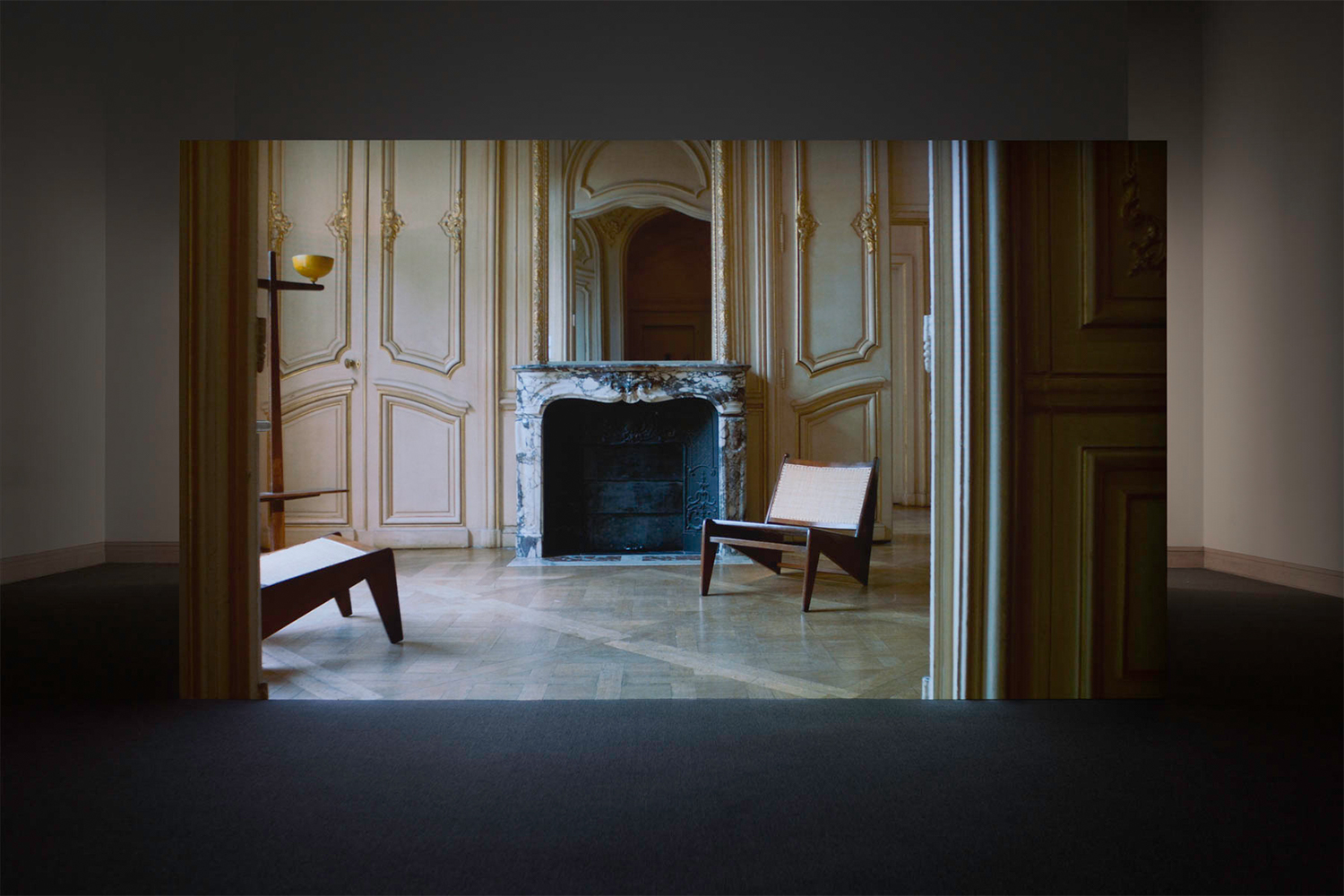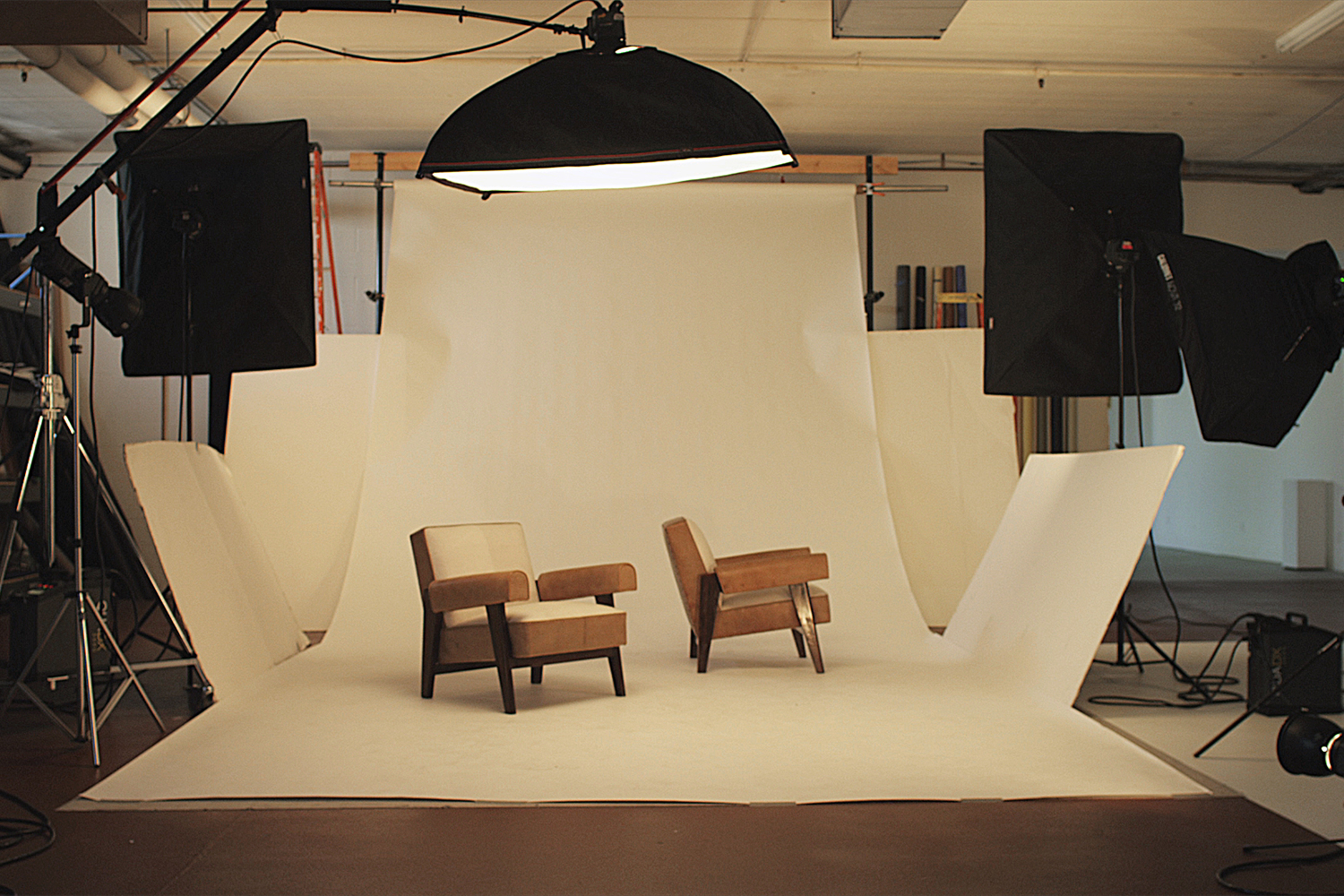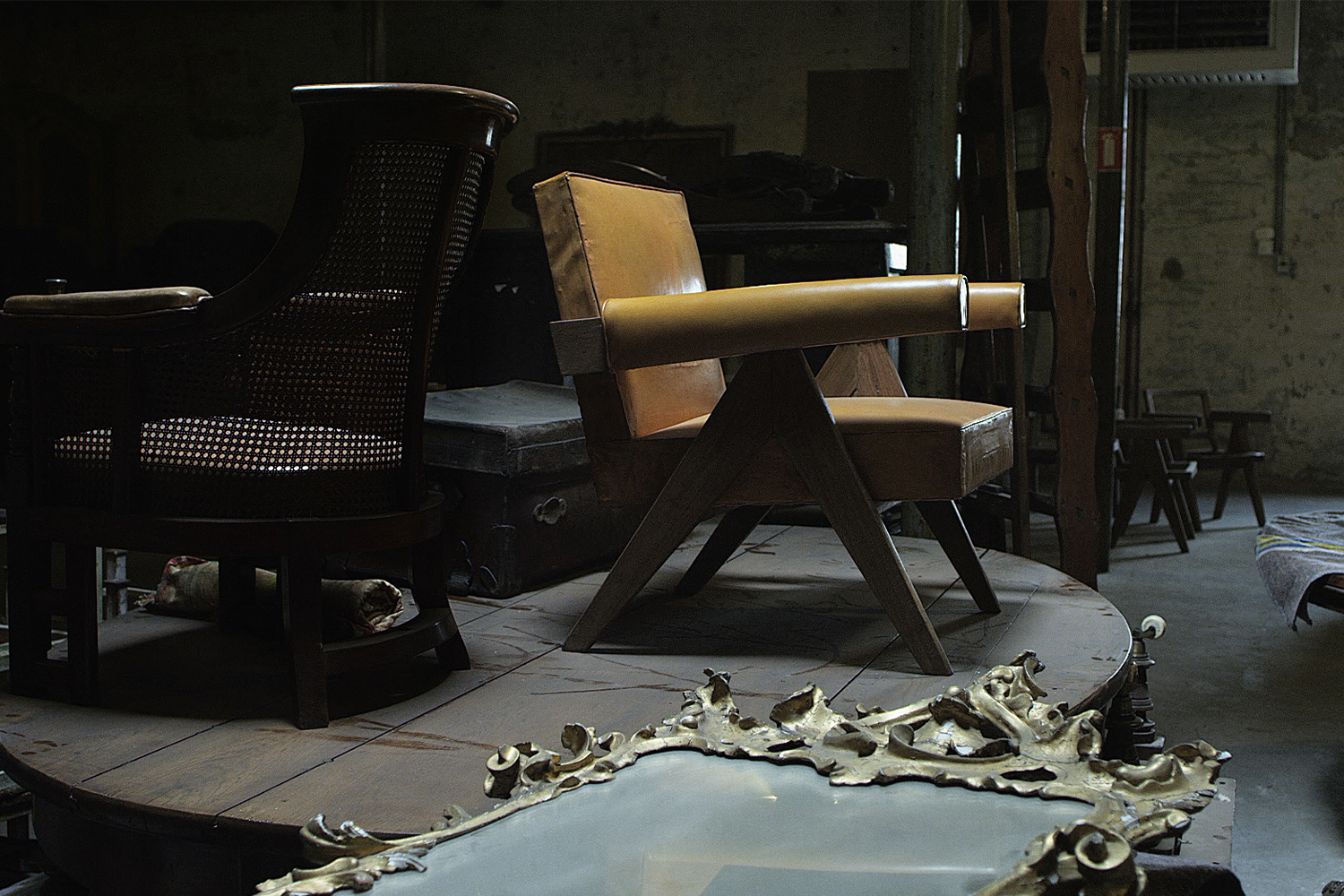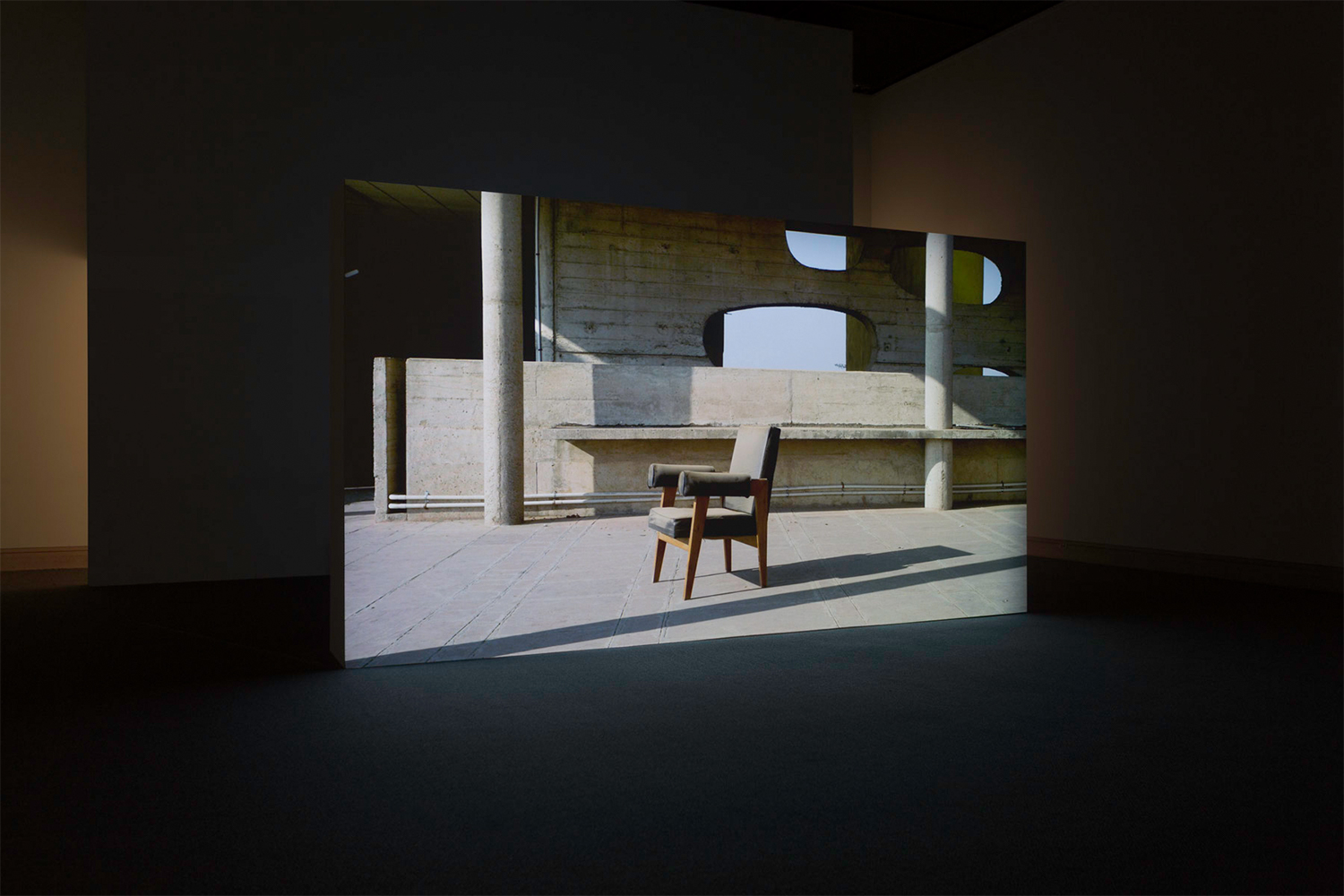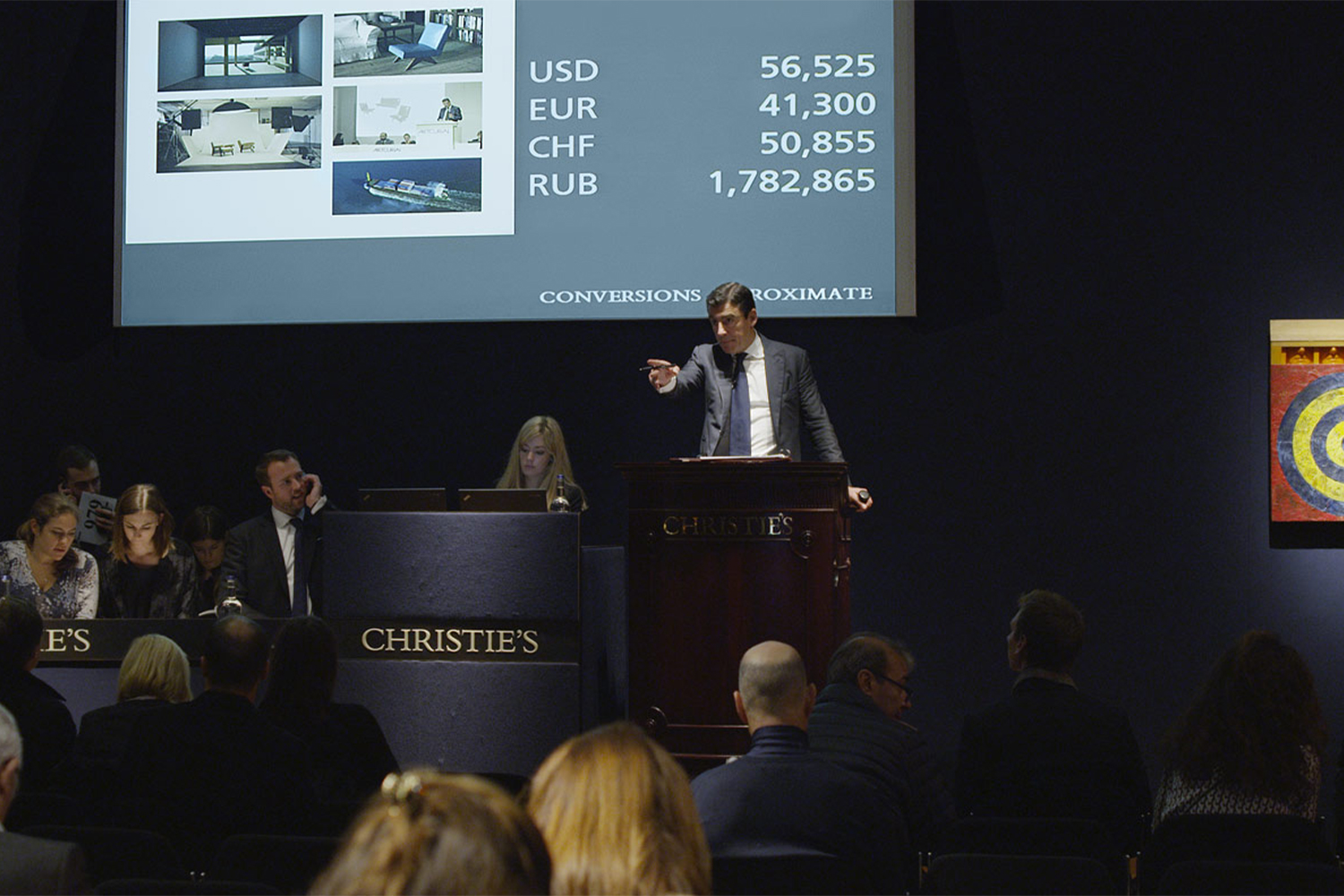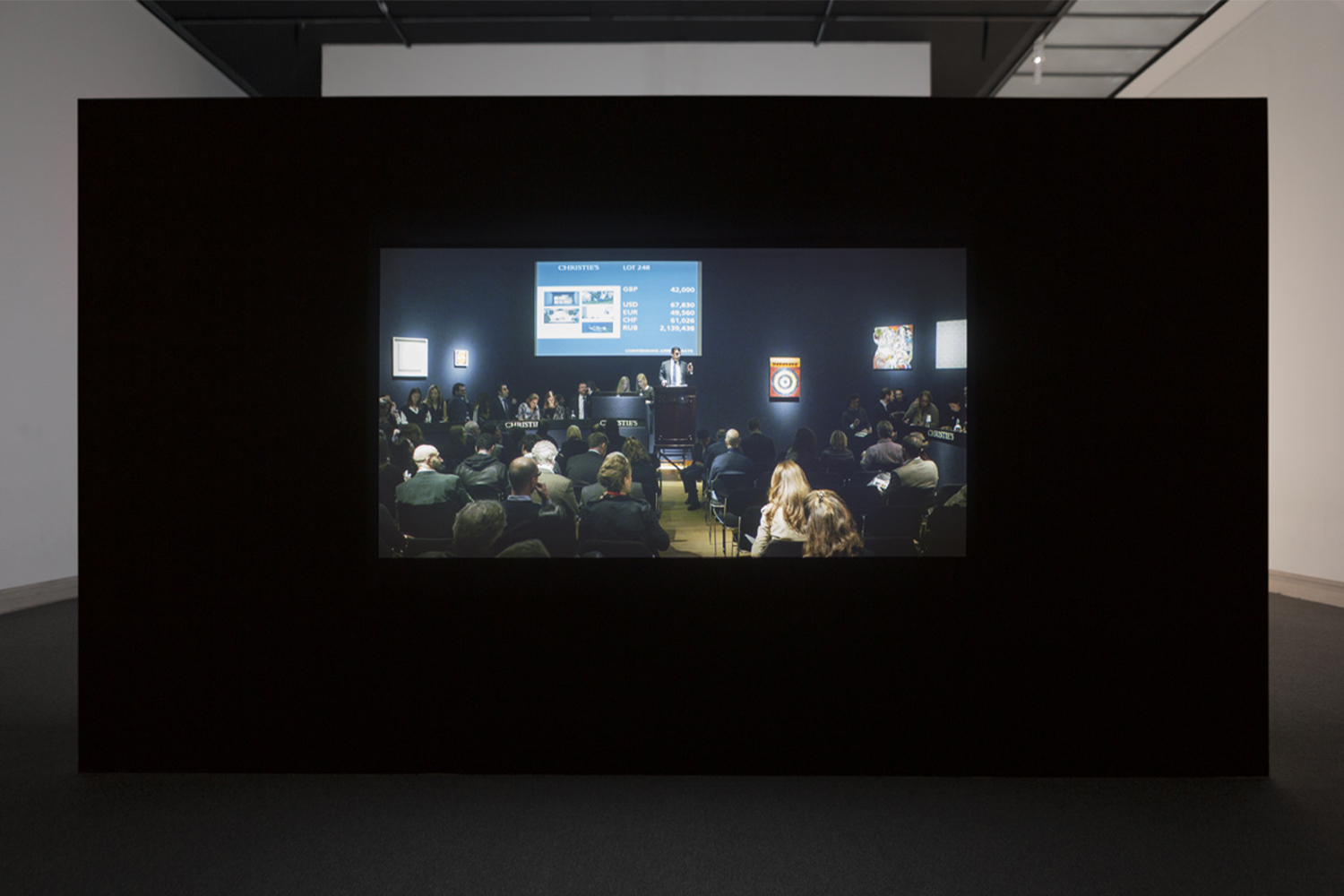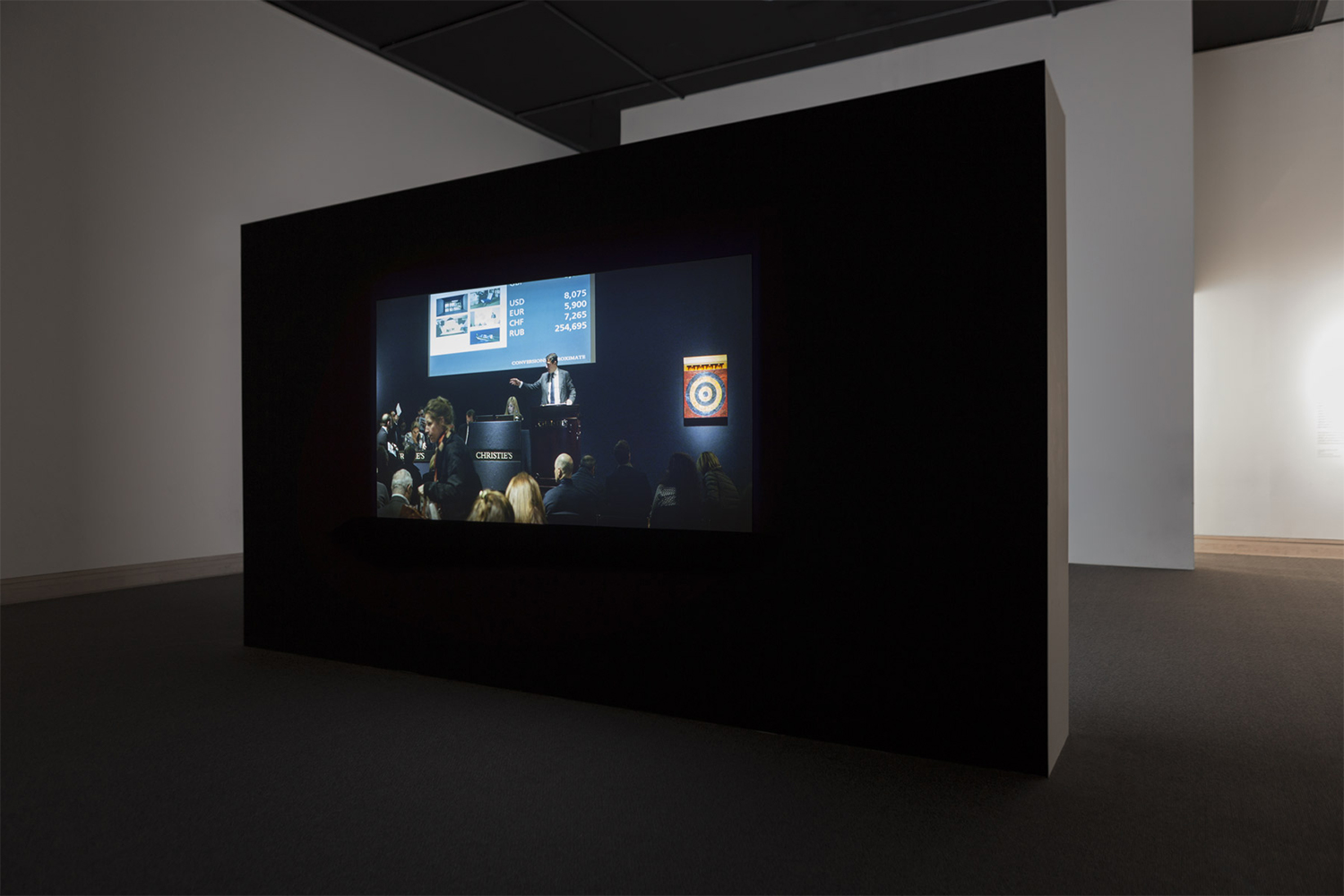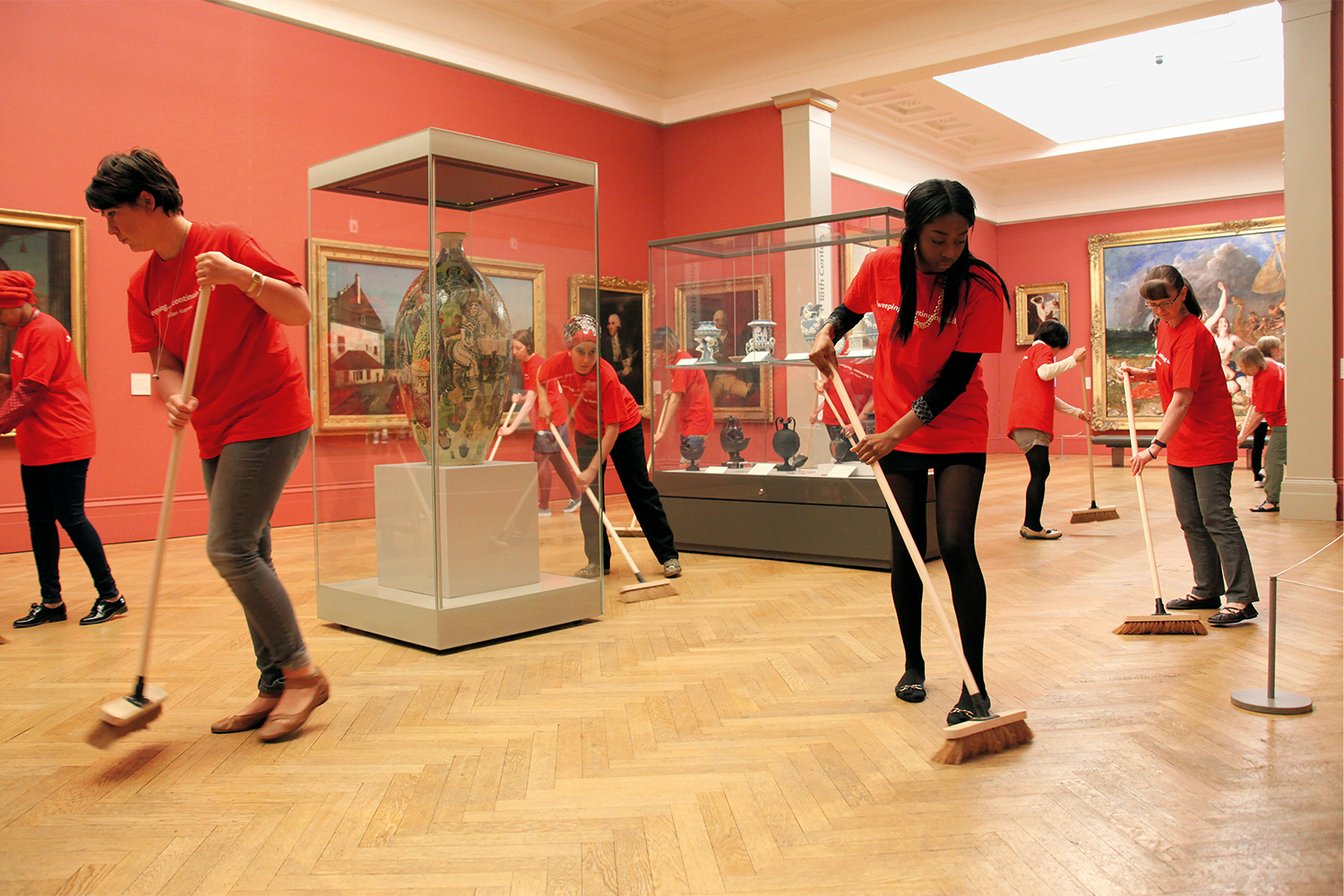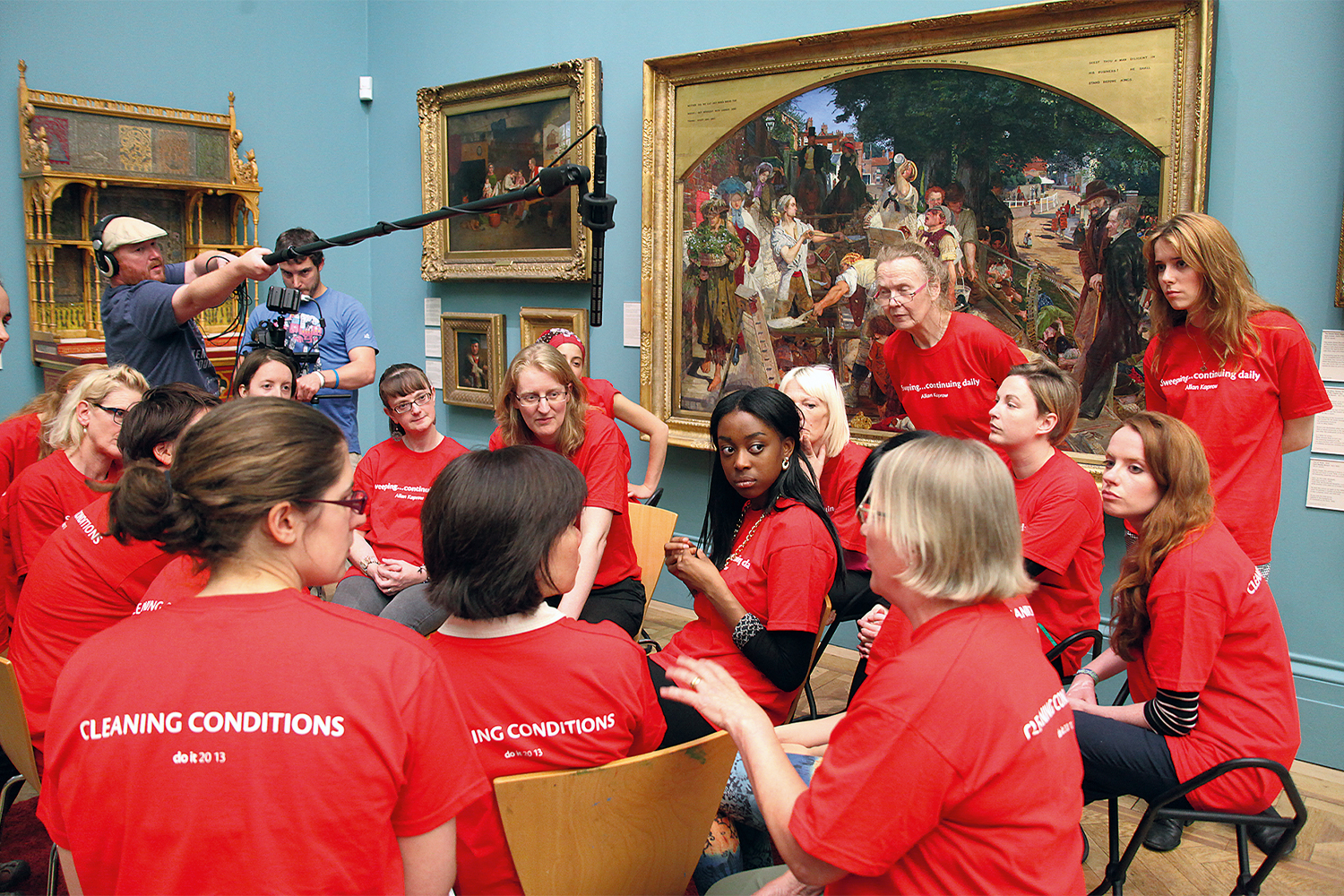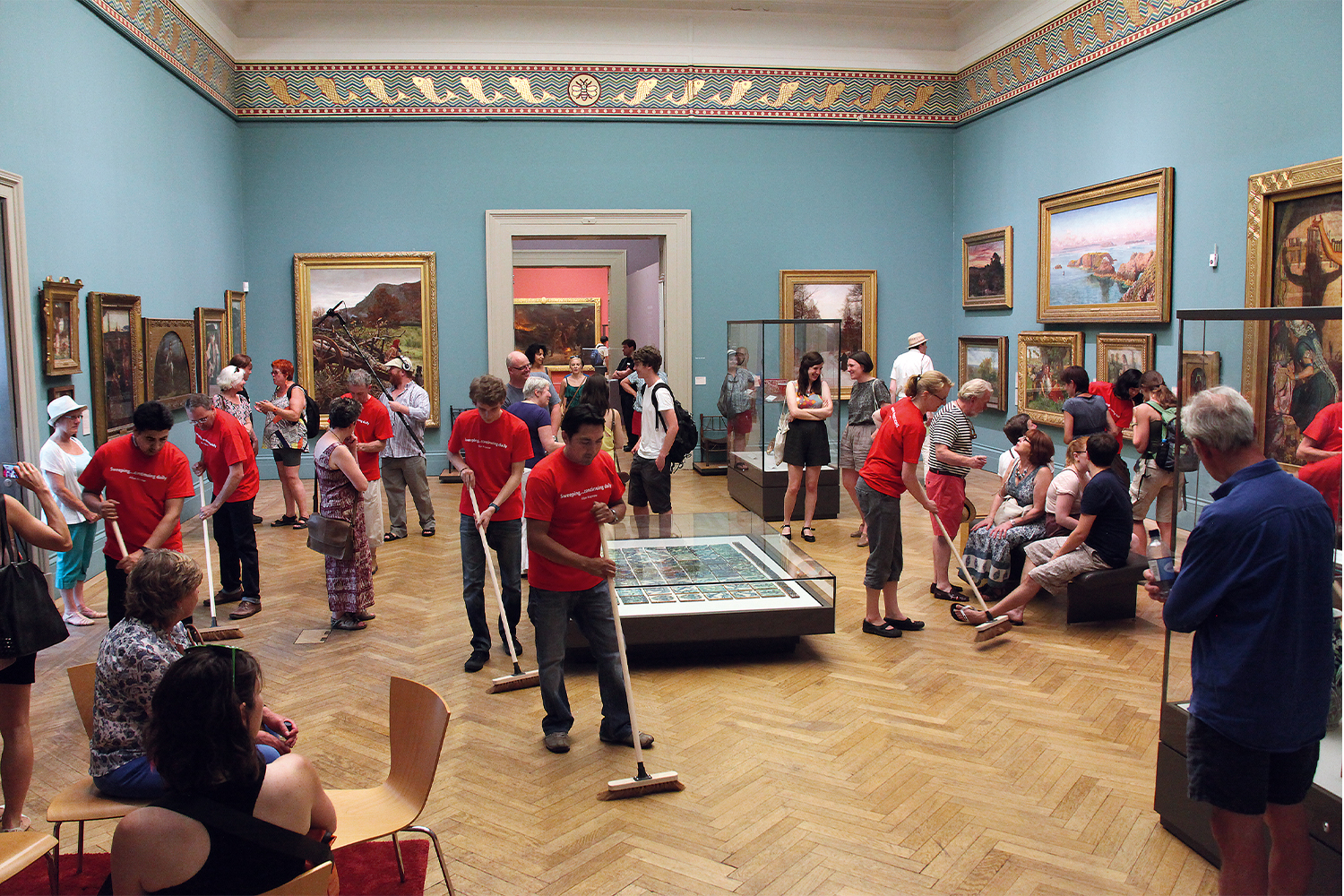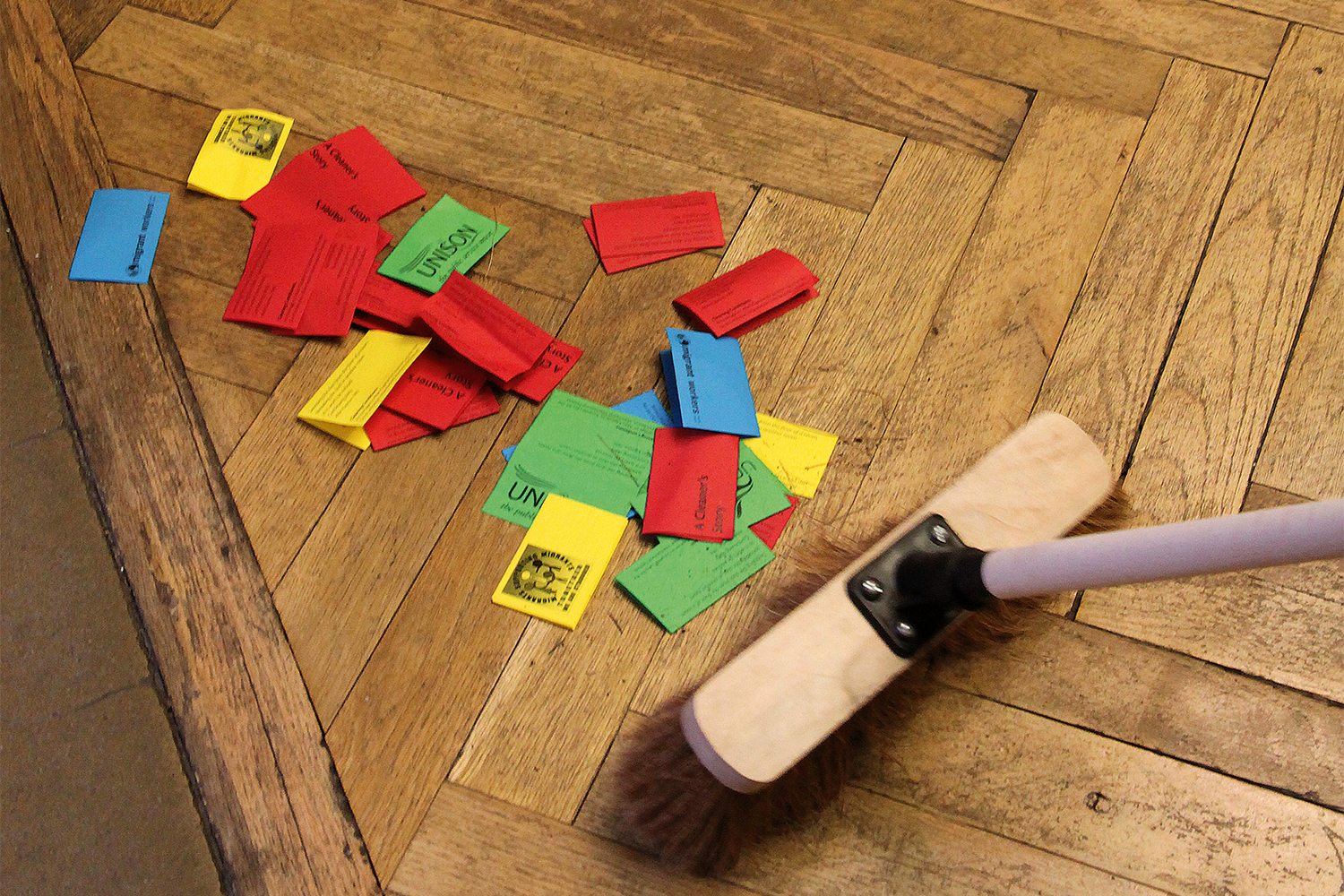A bi-monthly review of global art news from an admittedly fallible viewpoint.
Amie Siegel, Provenance, 2013. Excerpt. HD video, color and sound. Courtesy of the artist and Thomas Dane Gallery, London / Naples. © Amie Siegel.
Anyone who has ever struggled with poverty knows how extremely expensive it is to be poor.
— James Baldwin, “Fifth Avenue, Uptown: A Letter from Harlem,” in Nobody Knows My Name (1961)
Around the world, inflation has shot to record heights. For gallery cleaners, museum security guards, front-of-house staff, artists, for people in art and culture who live off work as opposed to wealth, wages are tumbling and the cost of living is rising. As Grace Blakeley writes in Tribune, in a low-wage, largely non-unionized economy, the poor rather than the rich pay for the cost of inflation.
In January 2022, UK inflation soared to the highest since March 1992. Inflation rates hit a 40-year high of 7.5% in America and a record 5.1% in the eurozone. The situation is likely to get worse before it gets better. By the second financial quarter of 2022, the Bank of England (BoE) expects UK inflation to reach 8%, possibly higher.
Inflation is the rate at which prices increase over time, calculated as a measure of the average “shopping basket” of goods and services bought by a typical household. As inflation increases, consumer purchasing power decreases.
The gap between rich and poor has significantly widened over the course of the current inflation crisis. As noted by James Meadway, director of the Progressive Economic Forum, the sharpest price rises have been on daily essentials like food and utilities, worse affecting those who can least afford it. In Britain, the cost of gas will rise an estimated 54% in April. A typical household is set to foot a £700 energy bill increase in 2020, on top of planned hikes on national insurance contributions and council tax, and the £20 universal credit cut pushed through by the Tories autumn last year.
Wage Depreciation: The UK Cultural Sector
Taken in isolation, inflation is not necessarily a problem, but when wages stay the same or go down, as they are now, living standards decline.
UK galleries and museums were hit hard by closures over the pandemic. In September 2021, the culture sector’s general value added was 8% smaller than February 2020, but wages in the art and culture industries have been slowly eroding for years.
According to the department for digital, culture, media, and sport (DCMS), nominal average wages in the cultural sector fell by 4.2% between 2016 and 2021, while those for the UK as a whole rose by 11.7%. Nominal wages are not adjusted for inflation. According to the BoE inflation calculator, inflation averaged 3.0% between 2016 and 2021, which means wages actually fell by 7.2% in real terms.
Nominal wages are measured in terms of money paid, i.e., the actual figure you receive in your monthly pay packet, whereas real wages are adjusted for inflation and measured against the cost of goods and services.
Real wages = nominal wages – (nominal wages x rate of inflation)
We see the same downward trend in wages at a national level, though far less steep. In Q4 of 2021, in the period spanning October to December, real pay fell on the year at negative 0.1%, but the UK has seen decades of flat or falling wages. As revealed by a report from the Office for National Statistics, real wage growth in the UK has stagnated since the 1970s onwards. When adjusted for inflation, real pay only just creeped above pre-2008 financial crash levels in 2020. Between 2010–18, average pre-tax weekly incomes fell by 3% in real terms.
The UK cultural sector represents 0.7 million jobs, which according to the DCMS definition includes the following sub-sectors: arts; film, TV and music; radio; photography, crafts, museums and galleries; library and archives; cultural education; and operation of historical sites and similar visitor attractions.
Real wages in the industry are already on the slump (and worse nominal wages too). If inflation reaches the worrying projected levels of 8% or more, pay inequality in the culture sector could increase even further. DCMS data shows vast regional wage differences. Median annual gross pay in London was £36,400, more than double the sector’s lowest wages in the North West (£15,305) and Wales (£13,800). In 2021, the gender pay gap was 11.1%, meaning women were paid 89p for every £1 earned by men. Sectoral estimates for 2020–21 show employees with disabilities earned £11.13 per hour on average, 29.9% less than non-disabled workers (£15.88). As the cost of living continues to rise, working in the culture sector could become increasingly unaffordable for marginalized groups and people from lower-income backgrounds, without family wealth, financial support from partners, or second jobs to subsidize earnings. Left unchecked, the art and culture industry risks becoming more and more exclusionary and elitist.
Suzanne Lacy, Cleaning Conditions, 2013. Video. 2′. Courtesy of the artist.
Organize for Pay Rises
The art world has long been built upon the exploitation of under and unpaid labor. In the introduction to the 2020–2030 strategy, Arts Council England chair Nicholas Serota slips into rhapsody as he imagines “crowds of volunteers” bursting into song. As activist and NYU professor of social and cultural analysis Andrew Ross writes, “the largest subsidy to the arts has always come from arts workers,” but that also makes the threat of withdrawing our labor extremely powerful. A shared experience of wage depreciation and precarious jobs could offer new potential for cross-sectoral bargaining, providing staff the power to demand pay rises in line with inflation or above.
The US has seen a recent wave of organizing in the culture industry, with museum union representation up to a ten year high of 13%. UK arts unions are also growing stronger and, by coming together, cultural workers have been able to win better pay and working conditions. According to Standard Occupational Classification data for 2020–21, there are 3800 artists in Scotland, and Scotland Artists Union has 1800 members, which means it represents a remarkable 47% of the total artist population, almost half. In 2018, Justice for Cleaners successfully campaigned to bring Goldsmiths cleaning staff in-house, securing increased annual leave allowance and access to a better pension provision for every cleaner at Goldsmiths University and Goldsmiths Centre for Contemporary Art.
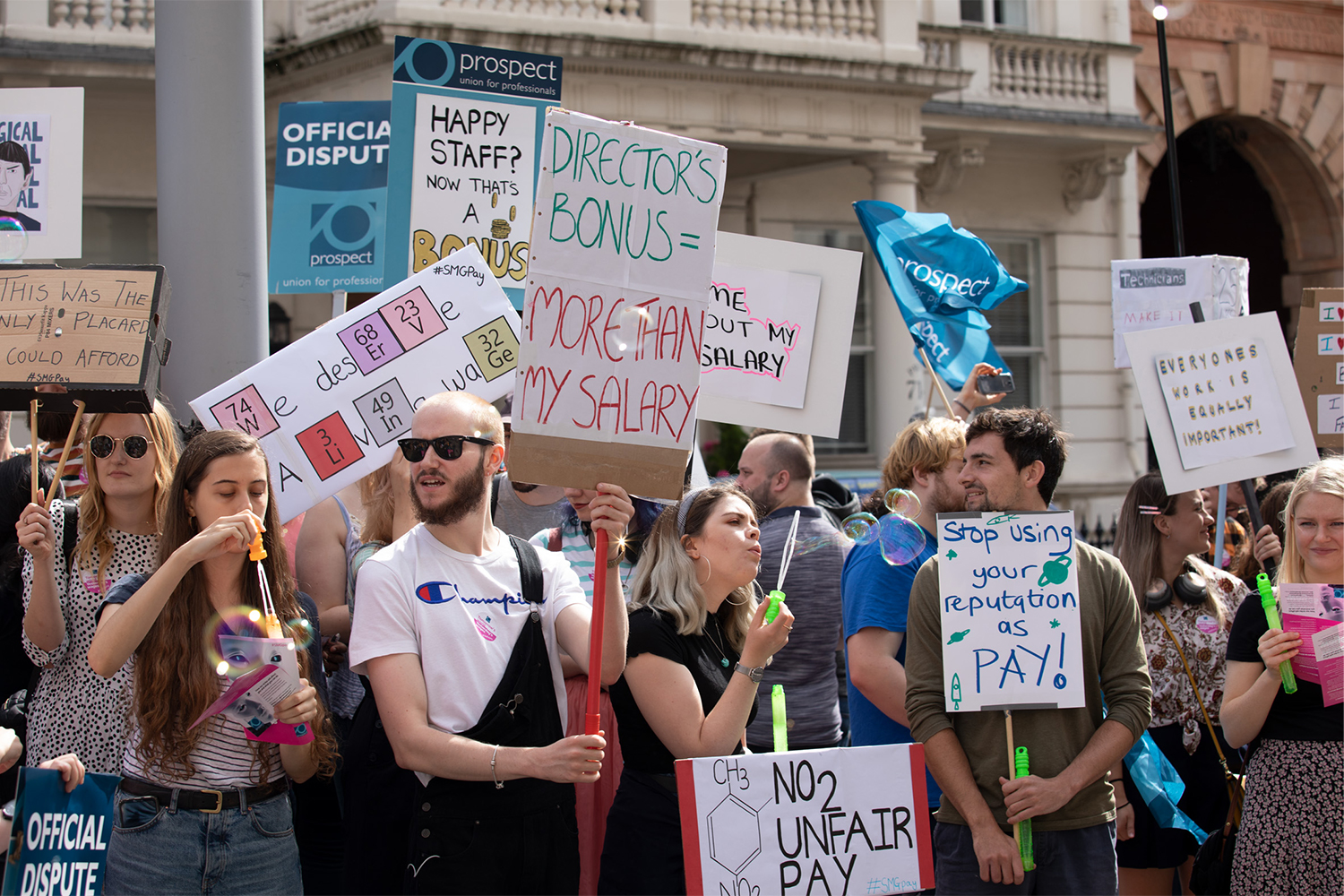
In October 2019, Science Museum workers went on strike in protest against low and falling wages. A member organization of Prospect union, Science Museum Group staff voted overwhelmingly in favor of industrial action. Hundreds of workers picketed SMG museums and collections up and down the country, in Bradford, London, Manchester, Wiltshire, and York. After a decade of below-inflation pay rises, average real term wages fell by 13% between 2010–19. Low-paid workers were subject to long-term wage suppression while senior management pay went up. Between 2014–18, SMG director Ian Blatchford received an average annual pay rise of 5.5% and the number of executive staff earning over £100,000 p.a. doubled from four to eight. As result of the strike, the SMG agreed to implement the real living wage and London living wage from 1 April 2020, the same year providing a 5.5% increase for staff in the capital and 6.9% pay rise for workers in the rest of the UK. Unlike the government minimum wage, the living wage is adjusted for the cost of goods and services, taxes, and social security provision, like for example universal credit. The museum agreed to maintain living wage rates year on year, a commitment the SMG fulfilled in 2022. Science museum staff showed the power of collective refusal but culture will only sing when wages not only meet the cost of living but afford workers quality of life.

